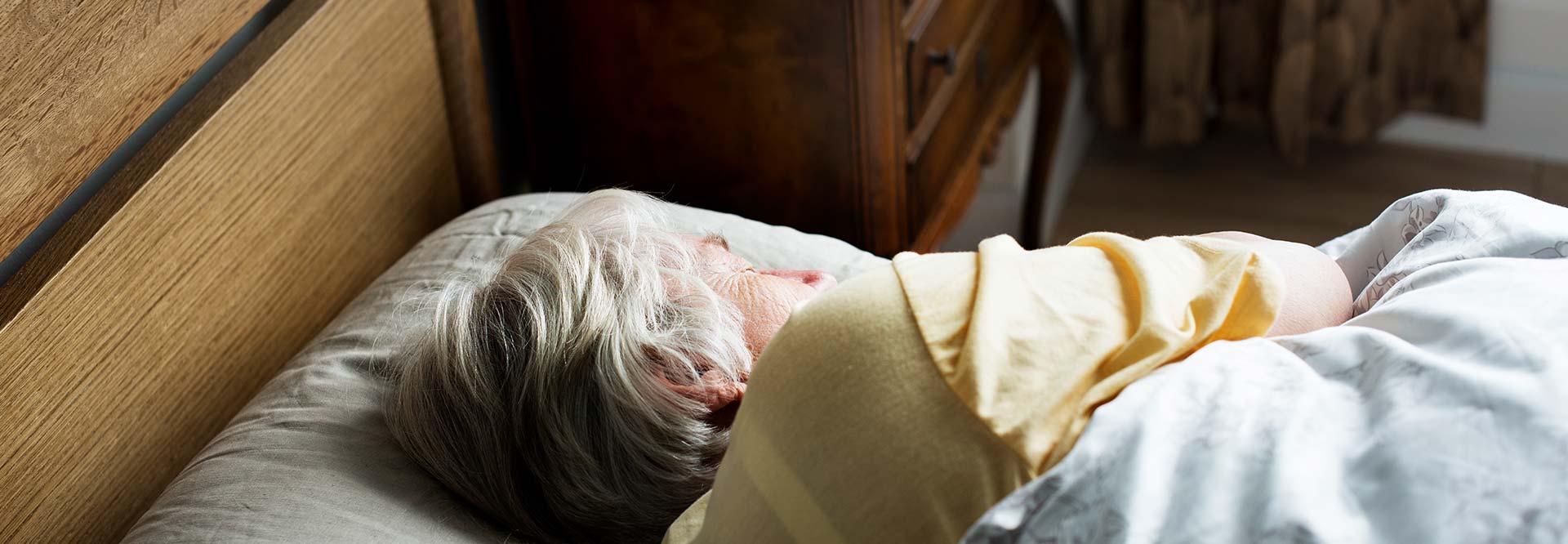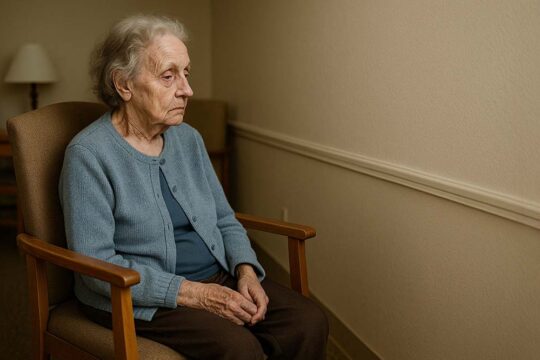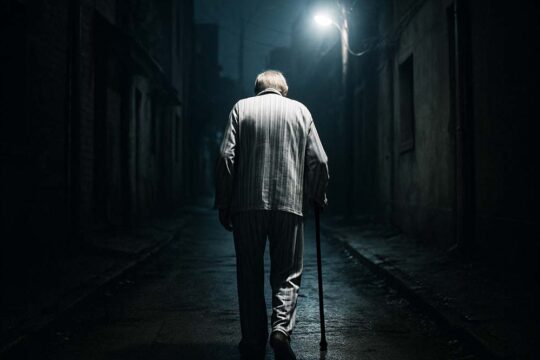
Are Bed Rails Allowed in Assisted Living Facilities?
Are Bed Rails Allowed in Assisted Living Facilities? What to Know About Physical Restraints of the Elderly
The use of physical restraints is highly regulated in California to ensure the rights and dignity of residents are protected. It’s essential to inform families, caregivers, and assisted living staff about the potential hazards of using physical restraints and highlighting the effectiveness of alternative approaches. Promoting a restraint-free culture within assisted living facilities requires commitment from all levels of the organization, from policy and training to leadership support to ensure the safety and dignity of assisted living residents in California.
What is considered a physical restraint?
In California, a physical restraint refers to any method, device, material, or equipment attached or adjacent to the resident’s body that the individual cannot remove easily and that restricts freedom of movement or access to a person’s body. This broad definition includes bed rails the resident cannot lower independently, traditional restraints like belts, straps, or handcuffs, and also less obvious forms like special chairs to prevent rising, or even certain types of deep or narrow chairs from which a resident cannot stand up.
California law states:
- – The California Code of Regulations (“CCR”), Title 22, § 72082 defines a physical restraint in the nursing home setting as: “any physical or mechanical device or material attached or adjacent to a patient’s body that the patient cannot remove easily, which has the effect of restricting the patient’s freedom of movement.”
- – (A) A Bed rail that extends from the head half the length of the bed and is used only for assistance with mobility shall be allowed.
- – (B) Bed rails that extend the entire length of the bed are prohibited except for residents who are currently receiving hospice care and have a hospice care plan that specifies the need for full bed rails.”
Restraints are only to be used when absolutely necessary, like when there’s a clear, documented risk of harm to the resident or others, and when less restrictive interventions have been tried and proven ineffective. The use of restraints must be part of a written plan of care, developed in consultation with the resident and their family, and continuously re-evaluated and monitored for necessity and effectiveness.
What are the safety concerns of using bed rails in assisted living and memory care?
While bed rails in assisted living and memory care facilities are intended to prevent falls and help residents turn or reposition themselves, they also pose some safety concerns:
Entanglement and Entrapment: Residents, particularly those with cognitive impairments or who are very frail, may become trapped, entangled, or wedged between the bed rails and the mattress or within the rails themselves. This can lead to serious injury or suffocation.
Injury from Attempting to Climb Over: Residents may fall while trying to climb over bed rails and sustain injuries. This risk can increase in memory care residents who may not recognize the rails as barriers or who may be confused and try to exit the bed unsafely.
Restricted Mobility Leading to Complications: Bed rails can restrict a resident’s mobility, potentially leading to muscle atrophy, decreased mobility, and increased risk of pressure ulcers due to prolonged periods of immobility.
Increased Agitation and Confusion: For seniors with dementia or cognitive impairments, bed rails may increase agitation or confusion. Residents may not understand why the rails are in place and may become distressed or more confused as a result.
Delayed Response in Emergencies: In emergencies, bed rails can delay the response time of caregivers to reach the resident or cause difficulties in lifting an elderly person out of their bed, especially if the rails are difficult to lower quickly.
Due to these concerns, many care facilities and healthcare organizations advocate for minimizing the use of bed rails or exploring alternative safety measures. Ensuring the safety and well-being of residents while respecting their independence and quality of life should be paramount.
What are the limitations of physical restraints in assisted living facilities?
The use of physical restraints in assisted living facilities carries limitations and concerns when it comes to residents’ rights and overall well-being: They’re encouraged to use a person-centered approach, focusing on less restrictive alternatives to meet resident care and safety. The overall goal is to maintain safety while preserving the resident’s dignity, autonomy, and rights as much as possible.
- Mental freedom rights
Physical restraints can severely impact a resident’s sense of autonomy and dignity, potentially leading to feelings of helplessness, depression, and anxiety. The psychological impact can exacerbate mental health conditions or contribute to the decline of cognitive functions, especially in people with dementia or other cognitive impairments.
- The freedom of movement rights
Restricting a resident’s ability to move freely infringes upon their basic human rights and may lead to physical complications. These include muscle weakness, decreased mobility, and an increased risk of pressure ulcers and contractures. The limitation on movement can hinder a resident’s ability to engage in daily activities or social interactions, further impacting their quality of life.
- Postural supports
While sometimes necessary for safety or to assist in proper positioning, postural supports can become physical restraints if used improperly or without the resident’s consent. There’s a fine line between using these supports to aid residents and using them in a way that restricts their movement unnecessarily. Supports should be regularly reassessed for their necessity and appropriateness, ensuring they serve a beneficial rather than a restrictive function.
California laws dictate regulations about postural supports:
“(5) Under no circumstances shall postural supports include tying, depriving, or limiting the use of a resident’s hands or feet.”
What are the alternatives to bed rails in assisted living?
Floor Beds or Lower Beds: Reducing the bed height minimizes the risk of injury from falls, making it safer for residents if they roll out of bed.
Fall Mats: Placing fall prevention mats or soft landing mats beside a bed helps cushion falls and reduce injury risk.
Thinner Mattresses and Box Springs: These lower the bed height to reduce fall injury risk, ease bed access, decrease reliance on restraints, and simplify transfers.
Bed Alarms: Alerts staff when a resident attempts to leave their bed, allowing for prompt assistance.
Motion Sensors: Similar to bed alarms, motion sensors detect when a resident is moving out of bed and alert caregivers to provide help. This technology is still under development.
Adjustable Beds: These beds can be adjusted to bring residents closer to the floor during sleep and raised to assist with getting in and out of bed.
Bolster Pillows or Foam Wedges: Pillows and wedges can prevent rolling out of bed and offer a softer, less restrictive alternative to hard rails.
Repositioning Aids: Devices or techniques to help residents turn or reposition themselves safely, reducing the need for rails.
Private Caregiver: Hiring a private caregiver to offer one on one companionship could reduce the possibility of a possible fall.
Fall Risk Assessment and Prevention Plans: Tailoring interventions for the needs of residents based on a thorough assessment of their fall risk factors.
By using these alternatives, assisted living facilities can create a safer environment for residents, focusing on prevention and support rather than restriction.
How to avoid physical restraints of the elderly in assisted living facilities
To minimize the use of physical restraints in assisted living, a multifaceted approach focused on patient/resident-centered care is essential. These efforts should be complemented by education for families, caregivers, and staff about the risks associated with physical restraints and the benefits of alternatives. Ongoing review and adjustment of care plans ensures interventions remain effective and responsive to changing needs.
By prioritizing non-restraint policies and practices, facilities can better ensure residents’ safety, dignity, and independence, aligning care with the highest standards of respect and compassion.
Discover the key differences between retirement homes and assisted living to help you choose the right care for your loved one’s needs.
Learn the risks of leaving a dementia patient alone, legal responsibilities, care strategies, and how to plan for their safety.
Learn why dementia patients wander at night, how to prevent it, and when memory care is the safest option for your loved one in San Diego.
Compare memory care and assisted living, from services and costs to safety and staffing, to find the right senior care in San Diego.



